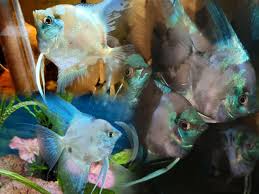Exploring Dragon Imagery in Stone Reliefs

The dragon is one of the most iconic and enduring symbols in art and mythology, representing power, wisdom, and mystery across cultures. Among the many artistic mediums that have captured the majesty of dragons, stone reliefs hold a unique place. These carvings, etched into stone with intricate detail, have preserved the stories and significance of dragons for generations. This article delves into the fascinating world of dragon imagery on stone reliefs, exploring their historical origins, cultural significance, artistic techniques, and notable examples from around the globe.
1. Understanding Stone Reliefs and Their Importance in Art
What Are Stone Reliefs?
A stone relief is a sculptural technique where figures are carved into a flat stone surface to create a three-dimensional effect. These carvings can range from low reliefs (bas-reliefs), where the figures are slightly raised from the background, to high reliefs, where the figures appear more deeply sculpted. Stone reliefs have been used for millennia to depict myths, religious narratives, and historical events.
Why Stone Reliefs?
Stone reliefs were favored in ancient architecture for their durability and ability to convey complex narratives in a single visual composition. The hardness of stone provided a long-lasting medium for artisans to immortalize their work, making stone reliefs a preferred choice for temples, monuments, and public structures.
2. Dragons in Mythology: A Global Perspective
Before exploring specific examples of stone reliefs, it is essential to understand the cultural significance of dragons in different regions. While the physical depiction of dragons varies across cultures, their symbolic meanings often overlap, embodying themes of power, protection, and balance.
Eastern Dragons
In East Asia, dragons are revered as symbols of prosperity, harmony, and natural forces such as water and wind. Unlike their Western counterparts, Eastern dragons are often benevolent, bringing rain and fertility to the land. They are frequently depicted with elongated serpentine bodies, flowing whiskers, and a commanding presence that exudes wisdom and authority.
Western Dragons
In European traditions, dragons are often portrayed as malevolent creatures, guarding treasures or terrorizing towns. They symbolize chaos and greed, and their defeat by heroes like Saint George or Beowulf represents the triumph of good over evil. Western dragons are usually depicted with large wings, scaly bodies, and a ferocious demeanor.
Dragons in Other Cultures
- Indian and Southeast Asian traditions often associate dragons with nagas, serpent-like beings that are both protectors and bringers of rain.
- In Mesoamerican cultures, creatures like the feathered serpent Quetzalcoatl embody dragon-like characteristics, representing the union of earth and sky.
- African and Oceanic folklore also feature dragon-like creatures, often connected to creation myths or natural phenomena.
3. Techniques in Carving Dragon Imagery on Stone Reliefs
Artistic Methods
Creating stone reliefs is a meticulous process requiring skilled artisans and sophisticated tools. The techniques involve:
- Chiseling: Using metal chisels and hammers to carve into the stone.
- Smoothing: Refining surfaces with abrasives to create contrast between the dragon and its background.
- Detailing: Adding intricate features such as scales, claws, and facial expressions to enhance realism.
- Polishing or Painting: In some cultures, reliefs were painted or polished to highlight certain elements.
Symbolic Composition
Artists often incorporated dragons into elaborate scenes, pairing them with clouds, waves, or other mythical creatures to emphasize their divine or supernatural nature. The placement of dragons in stone reliefs was also symbolic, with many positioned at gateways, altars, or walls to signify protection or guardianship.
4. Iconic Examples of Dragon Imagery on Stone Reliefs
The Nine Dragon Wall (China)
One of the most famous examples of dragon imagery in stone reliefs is the Nine Dragon Wall, found in cities like Beijing and Datong. These walls feature nine dragons carved in intricate detail, each in a different posture, symbolizing power, strength, and protection. The dragons are depicted amidst waves and clouds, reinforcing their connection to water and the heavens.
Angkor Wat (Cambodia)
The stone reliefs at Angkor Wat, one of the largest religious monuments in the world, feature serpent-like dragons intertwined with other mythical creatures. These carvings are part of larger narratives that depict creation myths and the balance between chaos and order.
Khajuraho Temples (India)
The Khajuraho Group of Monuments, a UNESCO World Heritage Site in India, features dragon-like creatures in its stone reliefs. These carvings are often integrated into depictions of divine battles and cosmic events, symbolizing the interplay between good and evil.
Notre-Dame Cathedral (France)
While Western dragon imagery is more commonly associated with malevolent forces, the stone gargoyles of the Notre-Dame Cathedral include dragon-like figures that serve as protectors of the sacred space. These carvings highlight the dual role of dragons in medieval European art—as both adversaries and guardians.
The Stelae of Quiriguá (Guatemala)
In Mesoamerican art, the stelae of Quiriguá feature elaborate carvings of serpentine creatures that resemble dragons. These reliefs are deeply symbolic, often linked to the mythology of Quetzalcoatl, the feathered serpent.
5. Cultural Significance of Dragons in Stone Reliefs
Guardians of Sacred Spaces
Dragons are frequently depicted on the gates, walls, and altars of temples and palaces, symbolizing their role as protectors. In East Asia, dragon imagery on stone reliefs often adorns the entrances to sacred spaces, ensuring that only the worthy may pass.
Embodiments of Natural Forces
In many cultures, dragons are associated with elements such as water, fire, or wind. Stone reliefs often depict dragons amidst swirling clouds or crashing waves, emphasizing their role as mediators of natural phenomena.
Symbols of Power and Authority
Dragons are commonly linked to royalty and divinity. In China, for example, the dragon was an imperial symbol, and its depiction in stone reliefs signified the emperor’s divine right to rule.
Narrative Devices
Stone reliefs often use dragons to tell complex stories, from creation myths to epic battles. The dynamic poses and intricate details of these carvings bring these stories to life, making the dragon a central figure in the narrative.
6. Preservation and Modern Appreciation
Challenges in Preservation
Despite their durability, stone reliefs are vulnerable to erosion, pollution, and human activity. Many ancient dragon carvings have been damaged or lost over time, underscoring the need for preservation efforts.
Contemporary Influence
Dragon imagery in stone reliefs continues to inspire modern artists and designers. From architectural motifs to digital art, the legacy of these carvings lives on, bridging the gap between ancient traditions and contemporary creativity.
7. Conclusion: The Timeless Appeal of Dragons in Stone Reliefs
Dragons, as depicted in stone reliefs, are more than just artistic creations; they are profound symbols of cultural identity, spiritual beliefs, and artistic mastery. From the intricate details of the Nine Dragon Wall to the mystical narratives of Angkor Wat, these carvings offer a glimpse into the human fascination with dragons and their enduring significance.
As we continue to uncover and appreciate these masterpieces, we not only celebrate the artistry of the past but also keep alive the myths and legends that make dragons one of the most captivating figures in human imagination. Stone reliefs stand as timeless monuments to the power, beauty, and mystery of dragons—a testament to their place in the world of art and culture.


